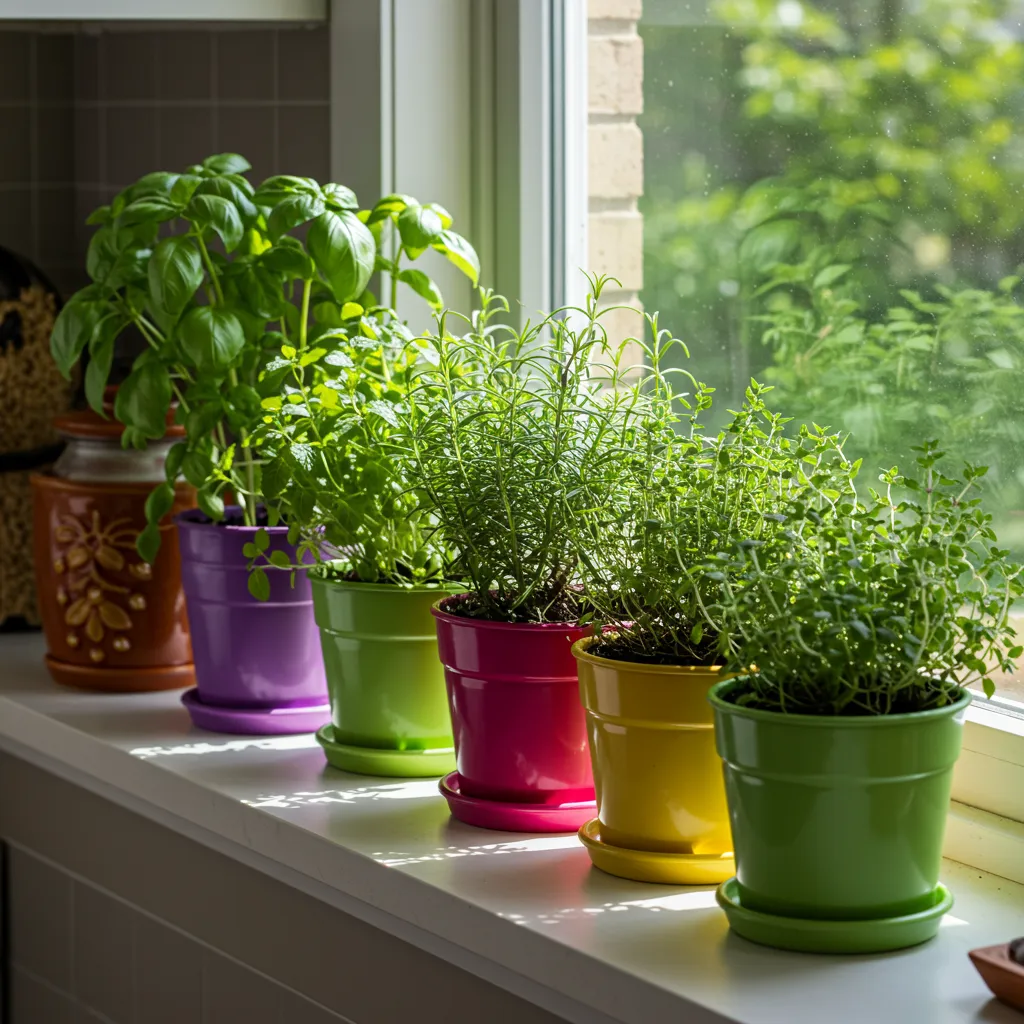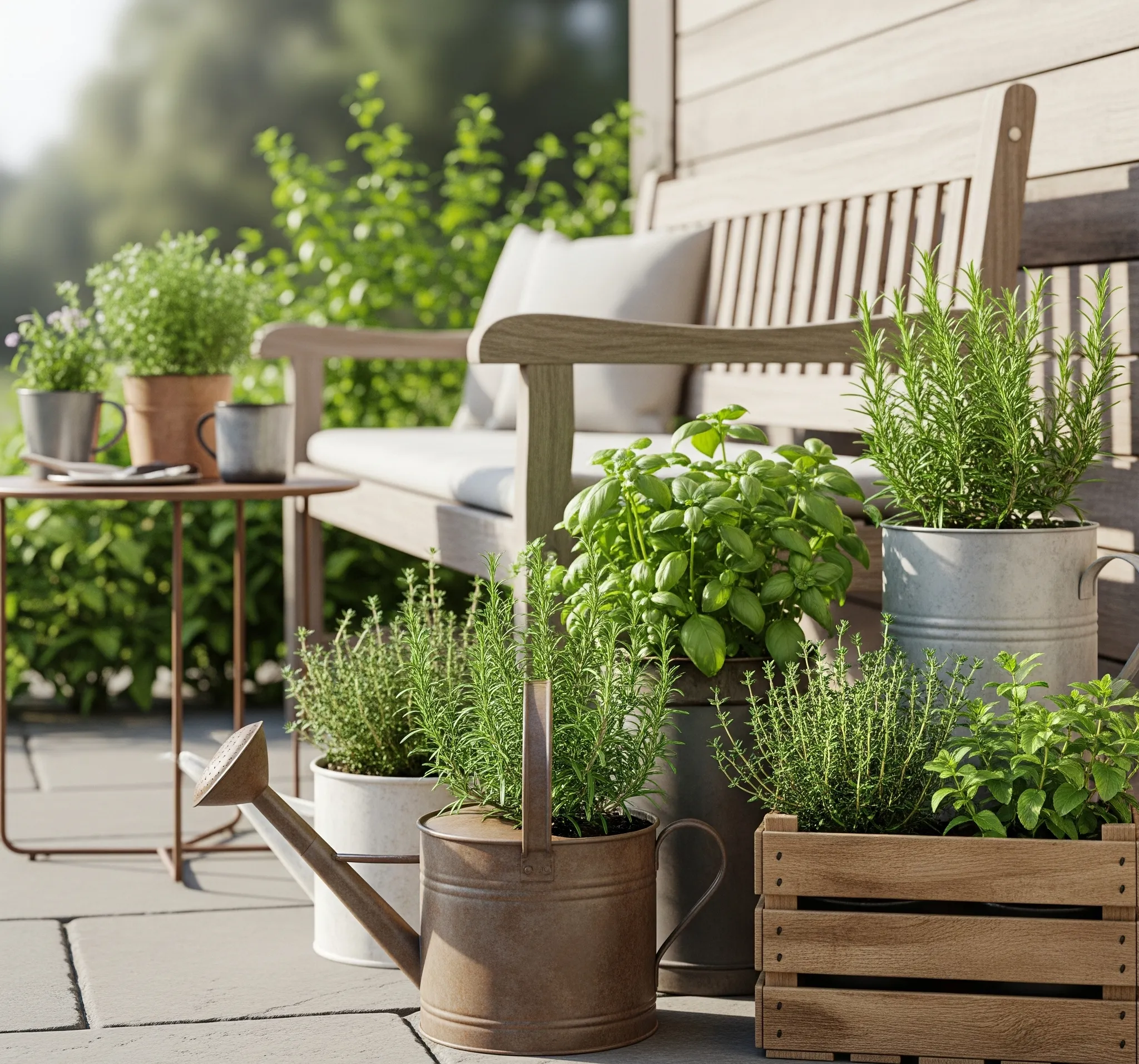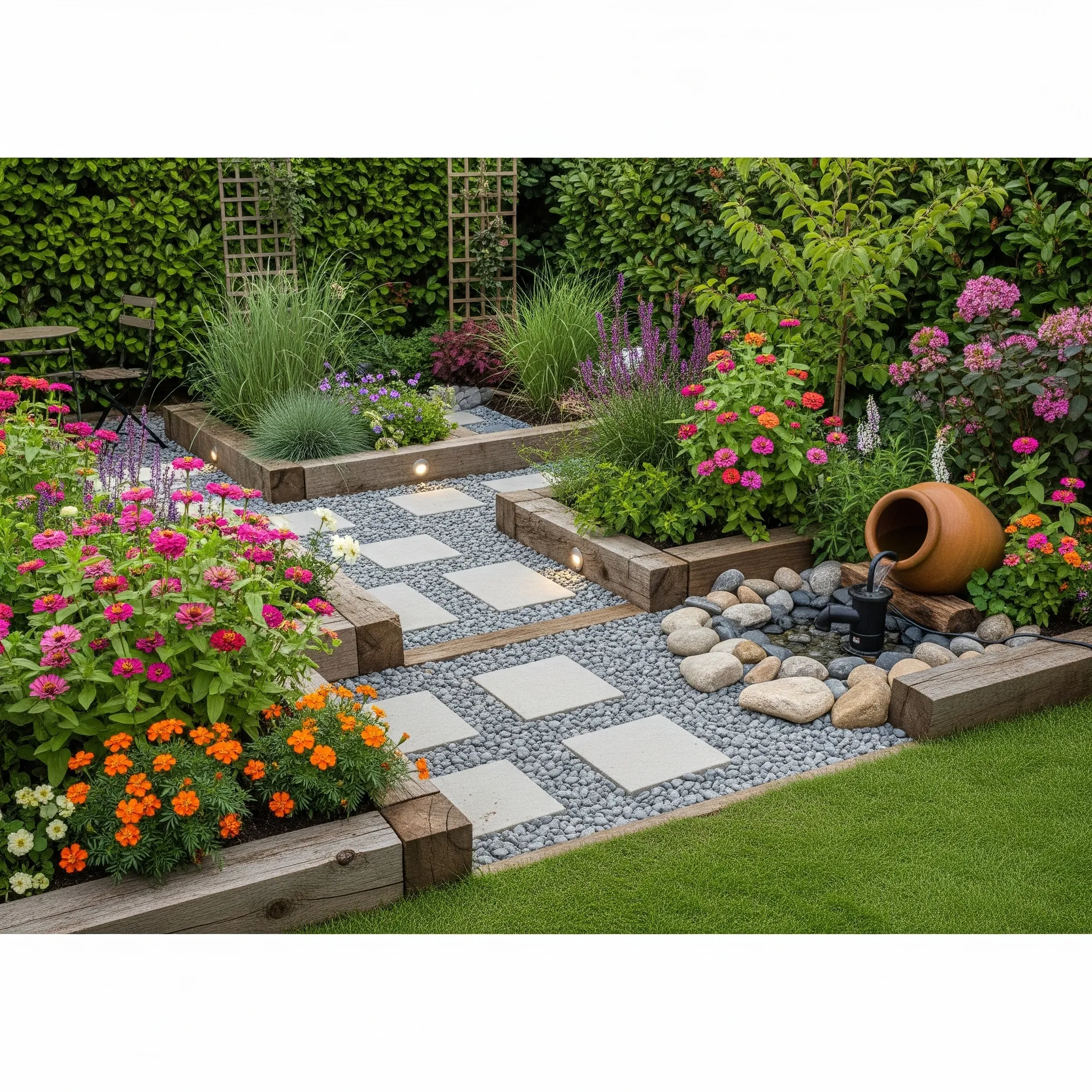Dreaming of fresh basil, mint, or thyme at your fingertips—without a backyard? Trust me, I get it. For years, I stared longingly at those picture-perfect outdoor herb gardens on Pinterest, convinced my tiny apartment kitchen would never measure up. But guess what? You absolutely can grow a thriving herb garden right in your kitchen, no matter how small your space.
Seriously, whether you’re living in a shoebox apartment, renting a place with zero outdoor real estate, or even rocking a tiny home, these tips are your golden ticket to homegrown goodness. Forget the notion that you need acres of land to enjoy fresh herbs. We’re about to turn your kitchen into a fragrant, edible oasis. Ready to get your hands a little dirty (in the best way possible)?
Choose the Best Herbs to Grow Indoors
First things first: picking your plant pals. Not all herbs are created equal when it comes to indoor living. Some are just, well, a little high-maintenance for our humble kitchen setups. We’re looking for the best indoor herbs to grow—the easy herbs for beginners that won’t give you a headache.
Basil: A Warm-Loving Classic
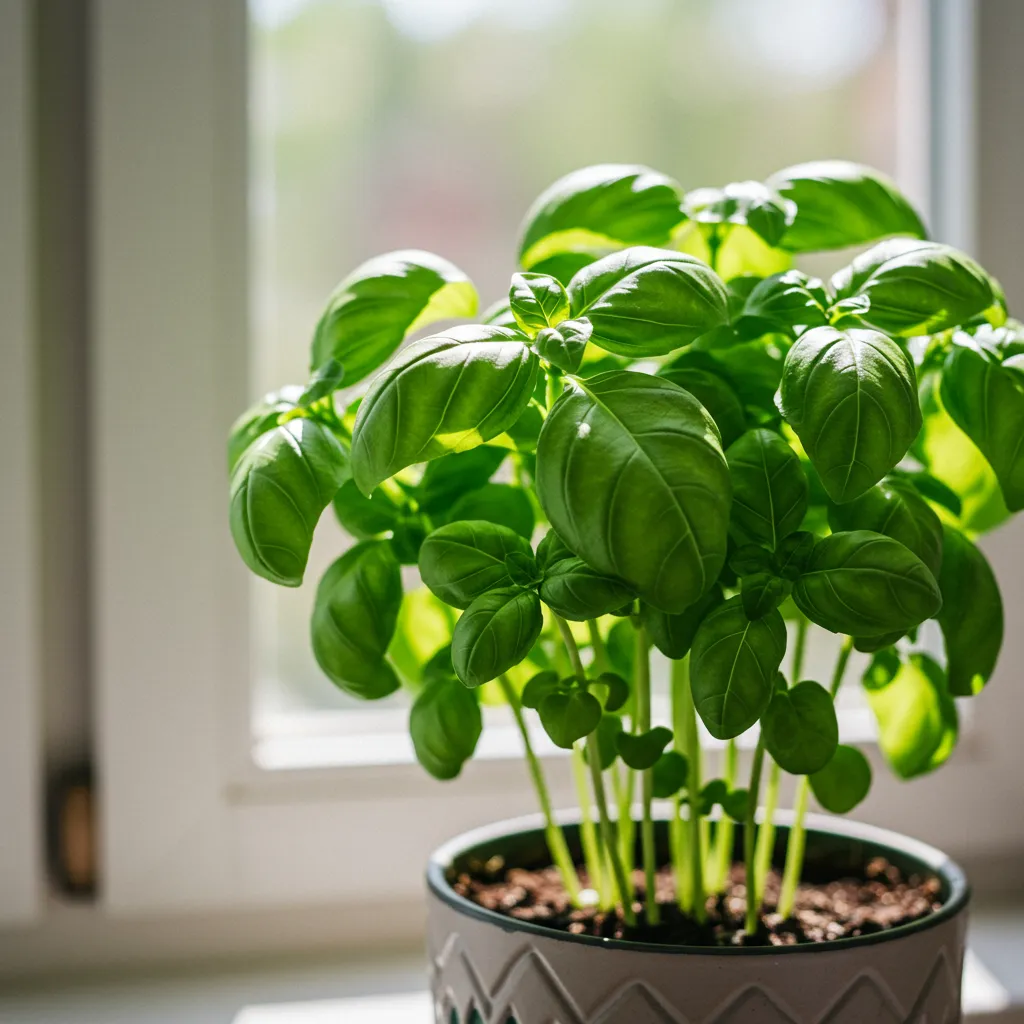
Ah, basil. Is there anything better than that sweet, peppery aroma? This warm-loving classic absolutely thrives indoors, especially if you can give it a sunny spot. I’ve found basil to be incredibly rewarding; it grows quickly and makes every Italian dish sing. Just be warned, it’s a bit of a drama queen if it gets too cold or too dry.
Mint: Hardy and Great for Teas
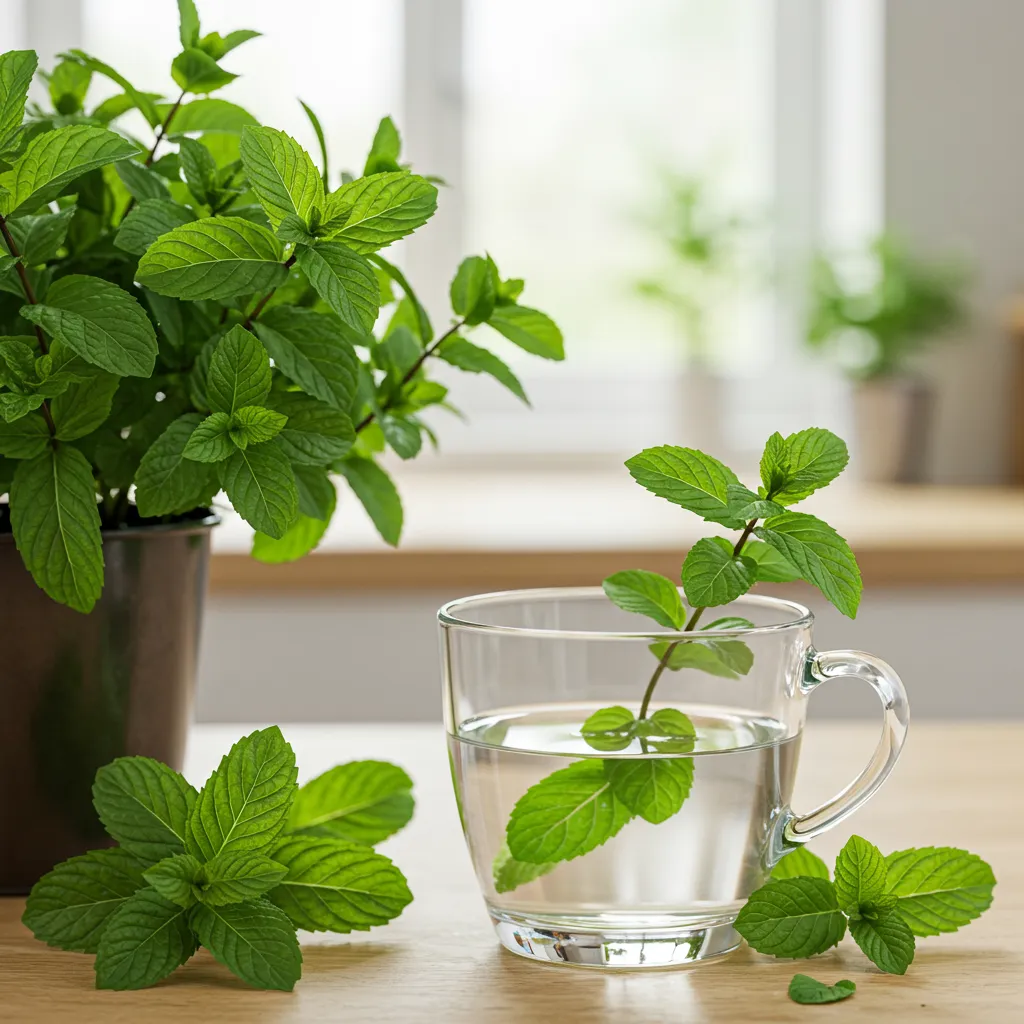
Mint is practically indestructible, which makes it a fantastic choice for indoor gardening. Seriously, if you can keep a houseplant alive, you can keep mint alive. It’s perfect for adding to teas, cocktails, or even just a glass of water. Just a heads-up: mint can be a bit of a bully and try to take over, so give it its own pot.
Chives: Fast-Growing and Compact
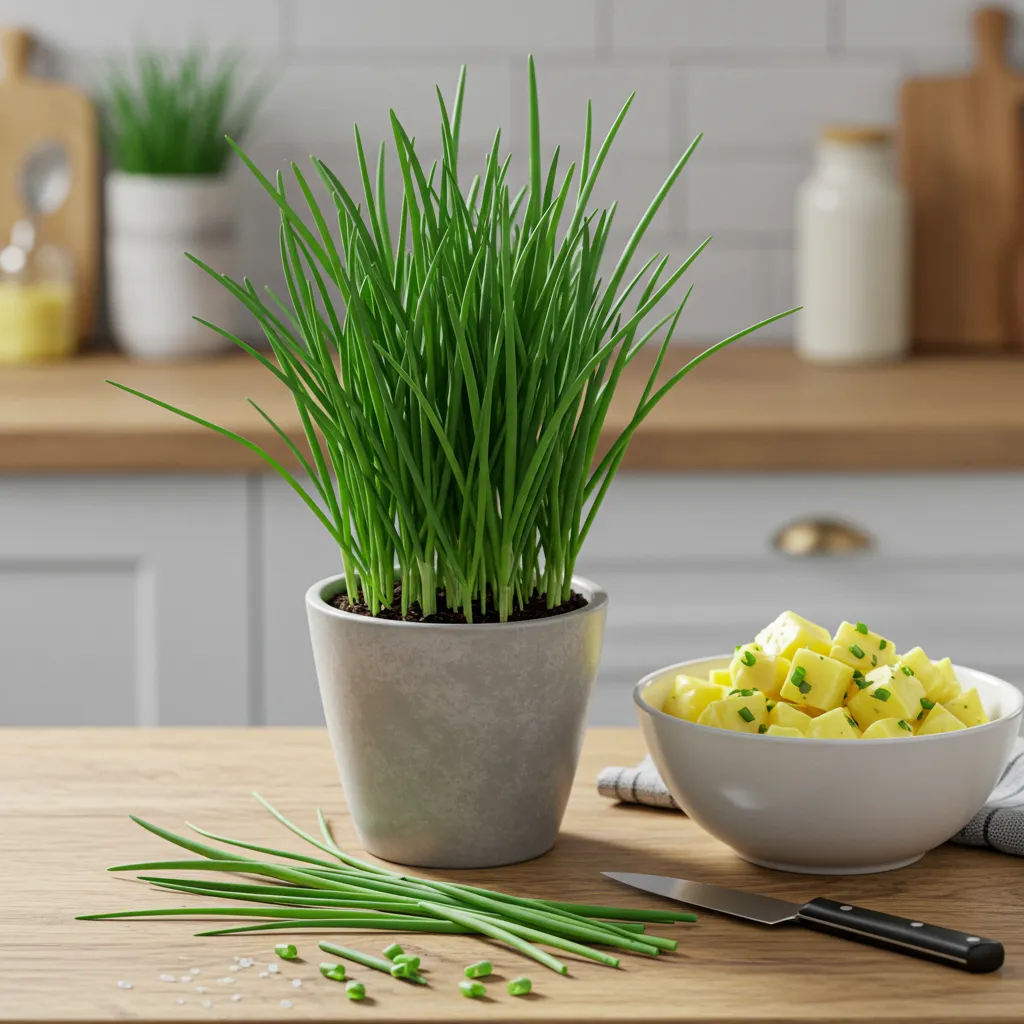
If you love a mild oniony flavor, chives are your jam. They’re super fast-growing and wonderfully compact, making them ideal for a small kitchen herb garden. Snip a few sprigs for eggs, potatoes, or a fresh salad. Plus, they look pretty cute with their slender, grassy leaves.
Parsley: Brightens Up Any Meal
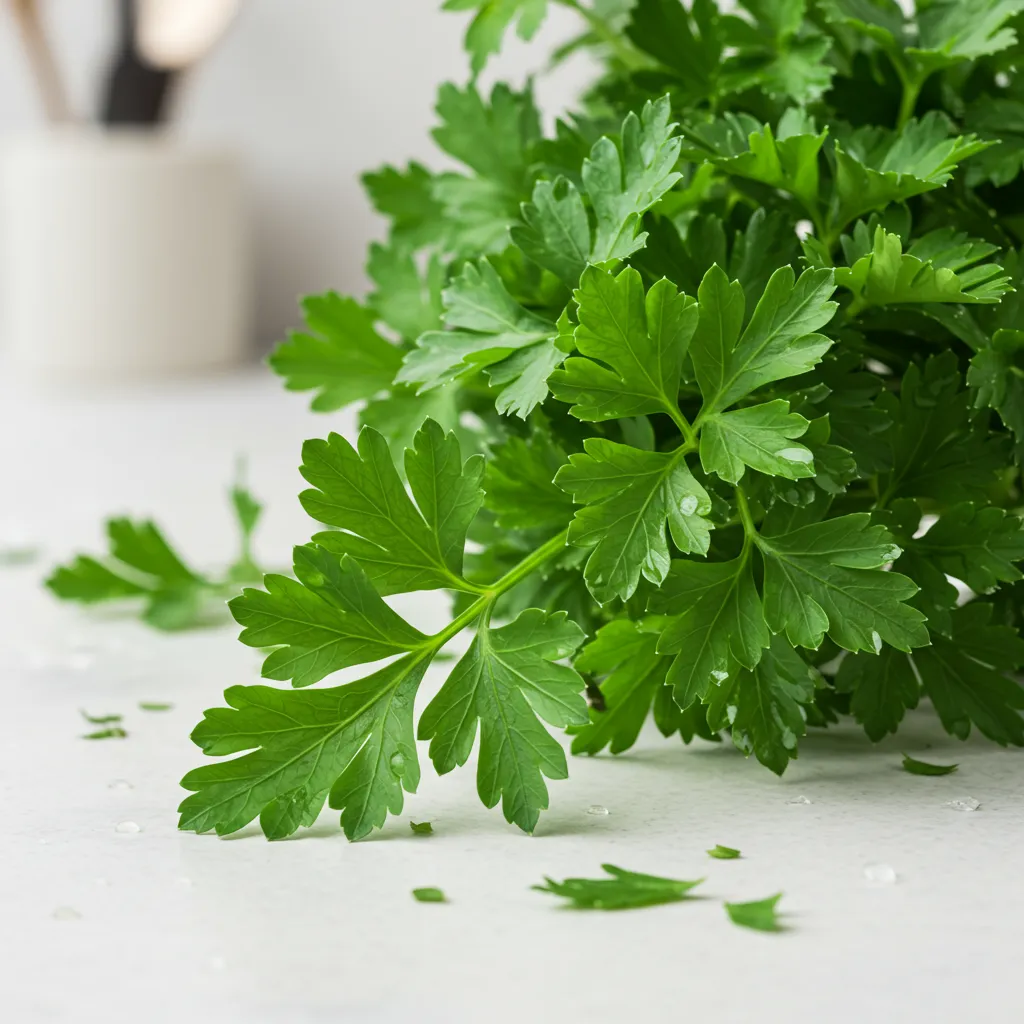
Both curly and flat-leaf parsley do well indoors, though I personally prefer the flat-leaf variety for its stronger flavor. Parsley really brightens up any meal, from soups to garnishes. It’s a bit slower to get going than chives, but once it establishes itself, you’ll have a steady supply.
Rosemary & Thyme: Hardy and Fragrant
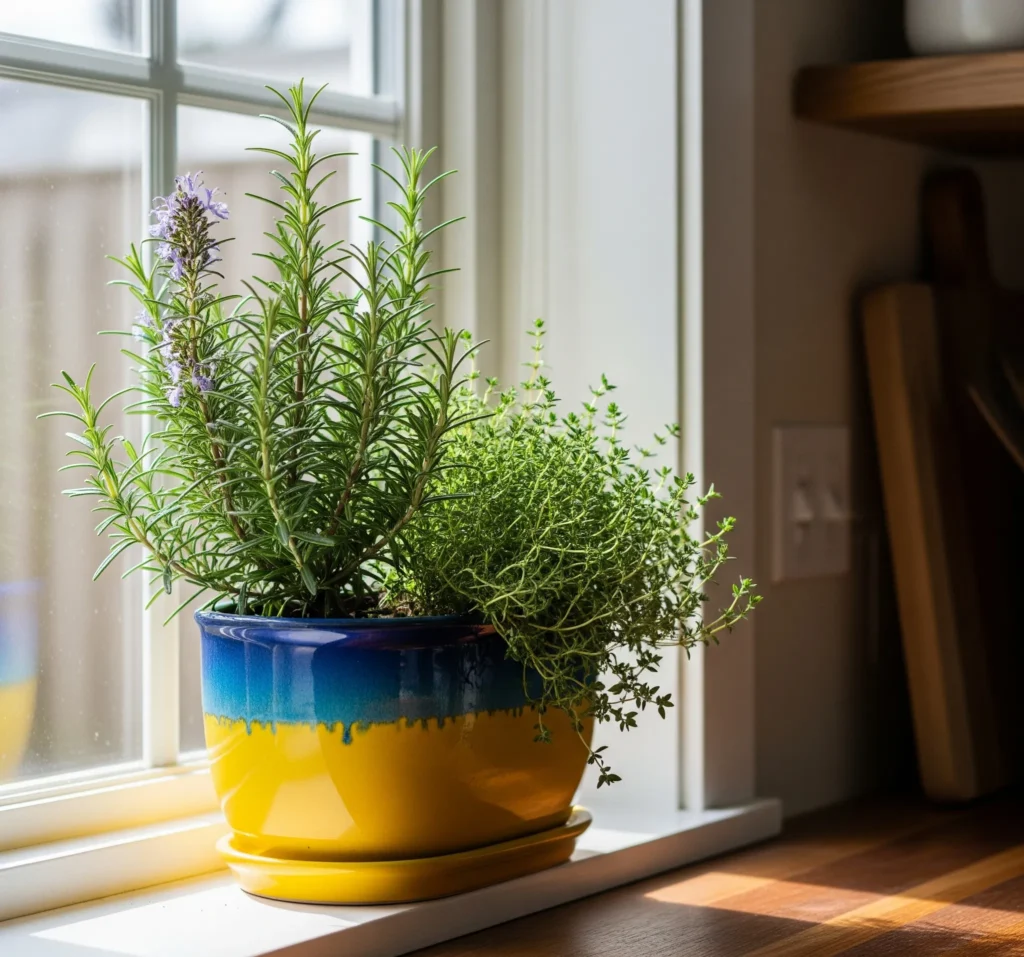
These two Mediterranean beauties are hardy and incredibly fragrant. Rosemary and thyme love a good sunny spot and don’t mind a bit of neglect, which, let’s be honest, is a huge plus for busy folks. They’re perfect for roasting vegetables or meats, filling your kitchen with an amazing aroma. My rosemary plant has been with me for years, surviving my occasional forgetfulness.
Pro Tip: Don’t try to become a master gardener overnight. Start with just 2–3 herbs that you know you’ll use regularly. It’s less overwhelming and helps you learn their individual quirks.
Pick the Right Containers & Pots for Indoor Herbs
Now that you’ve picked your green companions, let’s talk about where they’ll live. The right indoor herb garden containers are crucial for success, especially when you’re short on space. We’re looking for the best pots for herbs that are both functional and, dare I say, stylish.
Mason Jars or Recycled Cans (with Drainage Hacks)
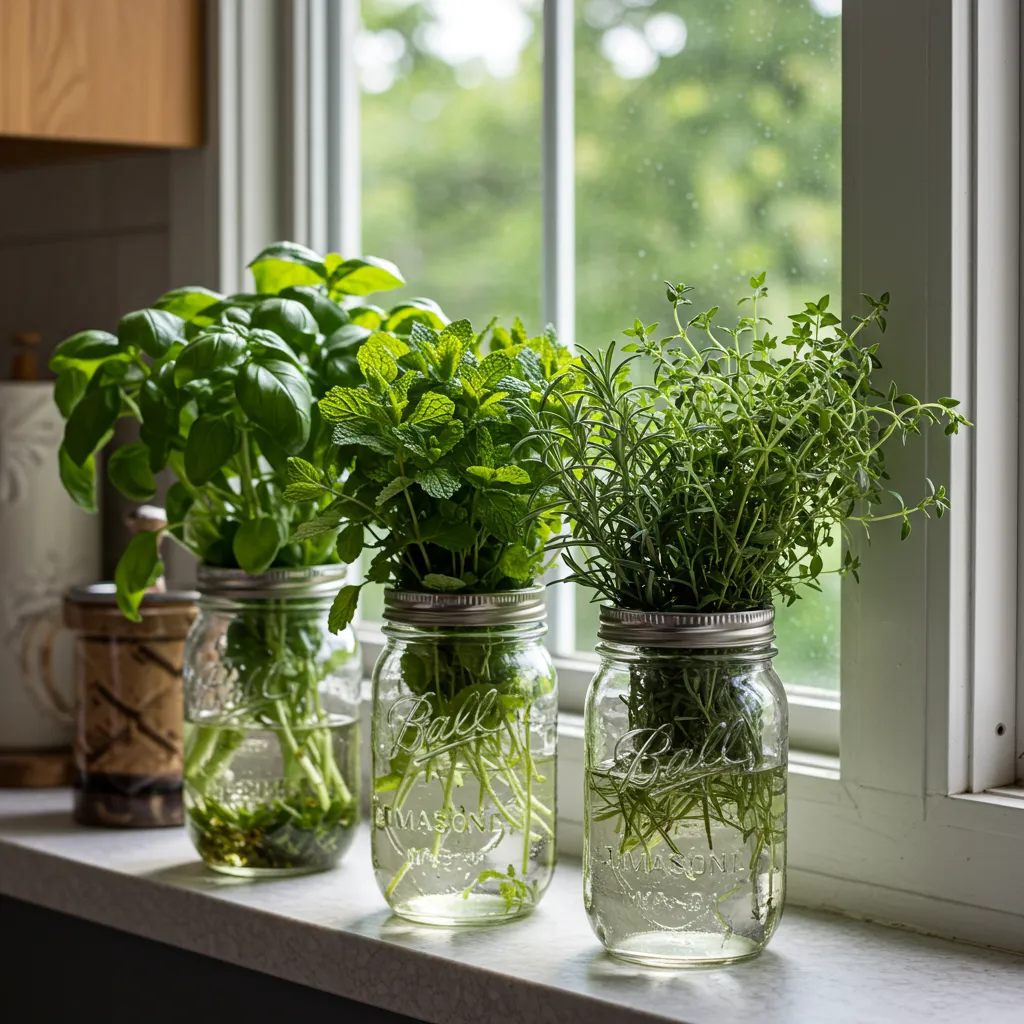
Okay, so mason jars and recycled cans look super cute, right? But here’s the catch: drainage. Herbs hate soggy feet. If you’re going this route, you absolutely must drill some drainage holes in the bottom. No drill? You can create a false bottom with a layer of pebbles or activated charcoal, but honestly, drilling is always the best bet.
Small Ceramic or Terracotta Pots
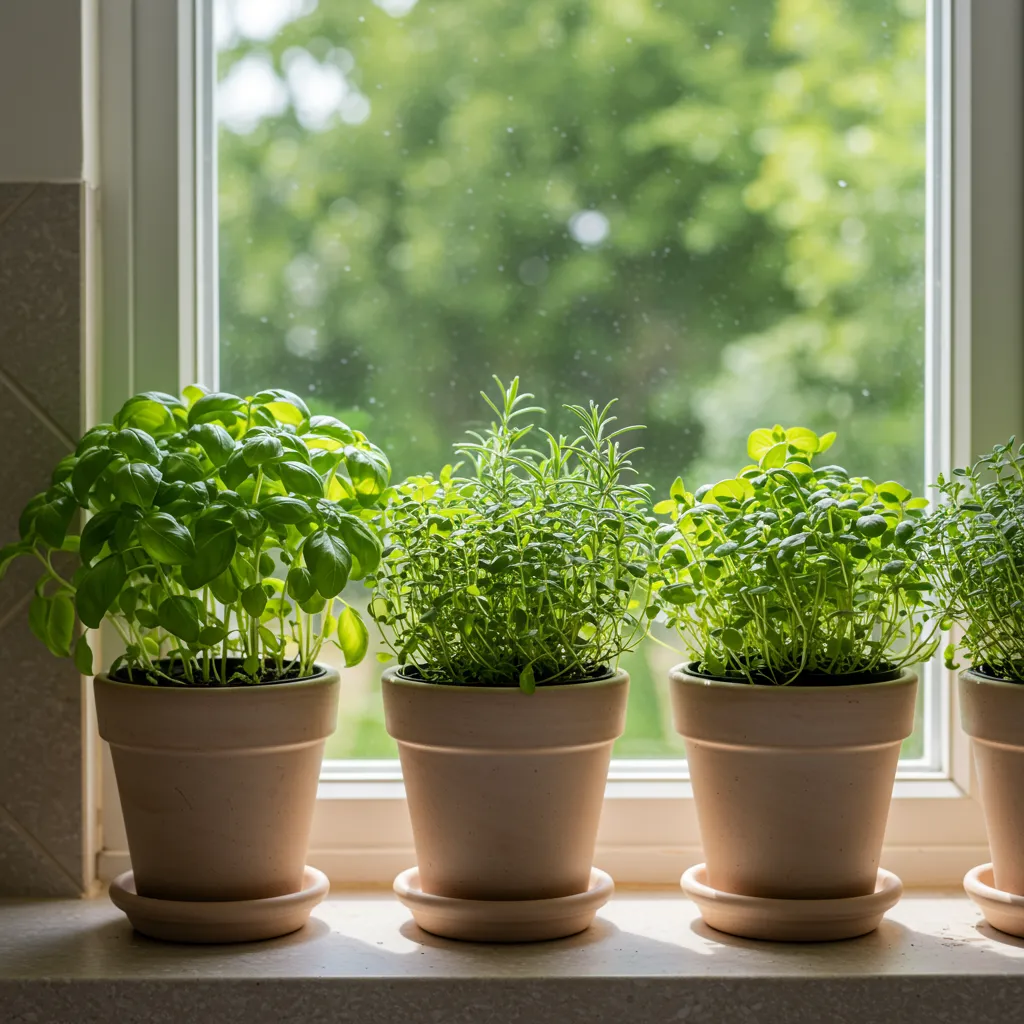
These are my personal favorites. Small ceramic or terracotta pots are classic for a reason. Terracotta is porous, meaning it helps wick away excess moisture, which is great for herbs that prefer drier soil. Ceramic pots are less breathable but often come in prettier designs. Just ensure they have drainage holes! Seriously, drainage is the hill I will die on for indoor herbs.
Hanging Planters or Wall-Mounted Herb Planters
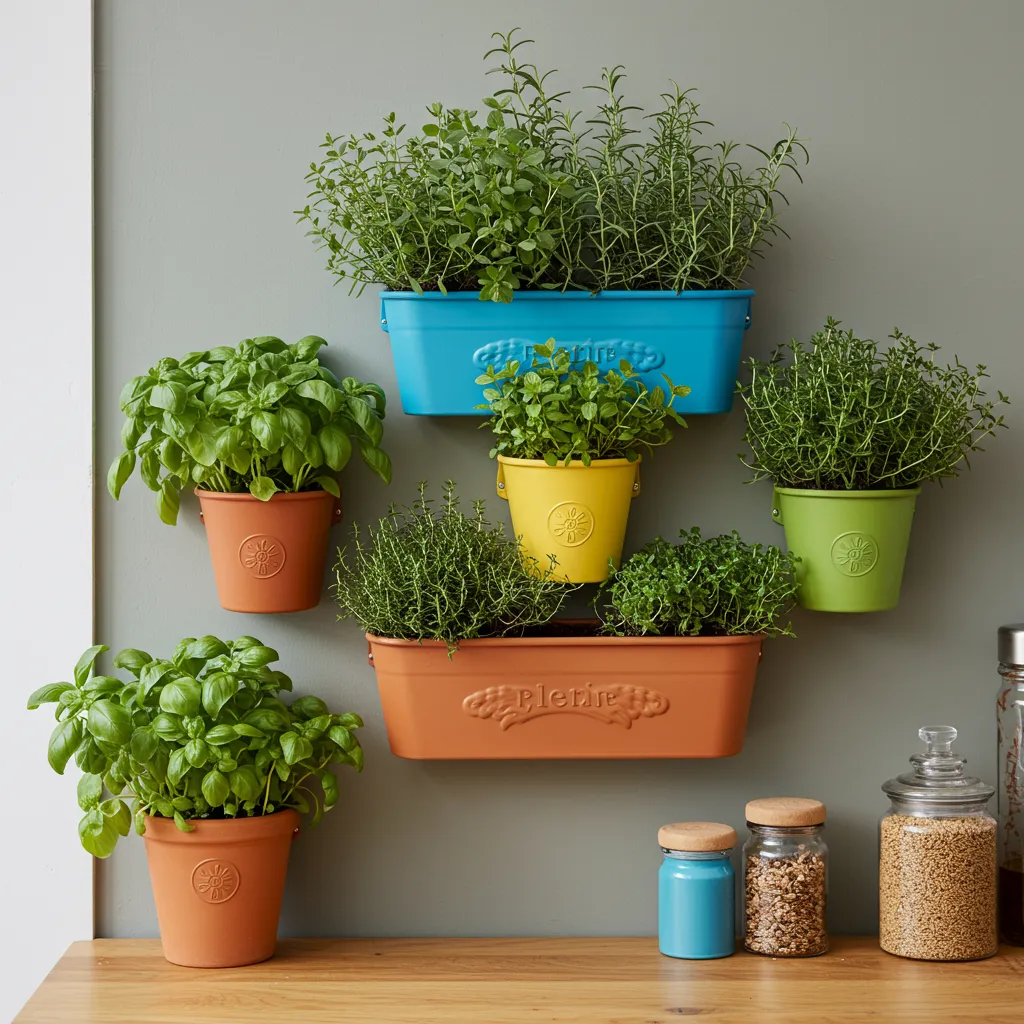
When counter space is a premium (and whose isn’t?), look up! Hanging planters or wall-mounted herb planters are brilliant. They free up valuable real estate and add a lovely vertical element to your decor. Just make sure they’re sturdy enough to hold the weight of soil and water.
Tiered or Stackable Vertical Planters for Small Kitchens
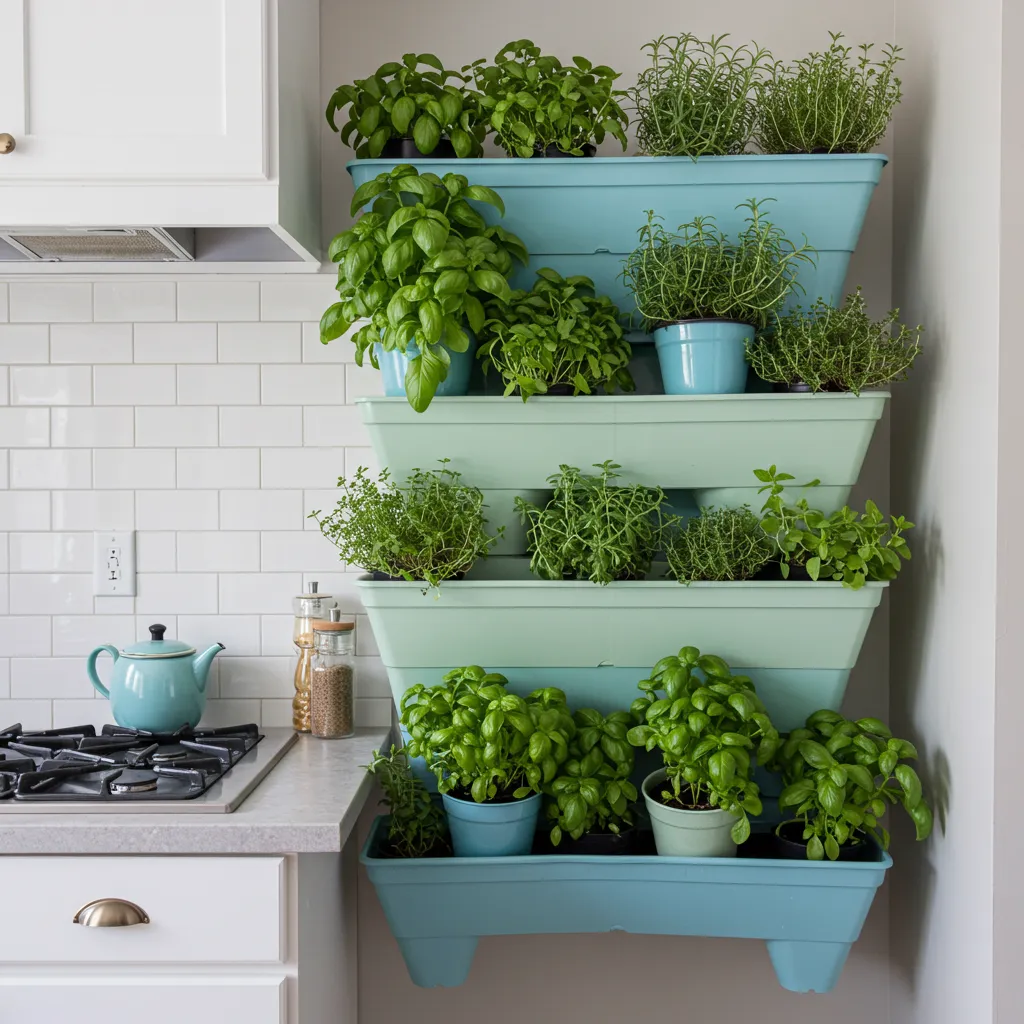
For the truly space-challenged, tiered or stackable vertical planters are a game-changer. They allow you to grow multiple herbs in a compact footprint, often resembling a mini green tower. These are fantastic kitchen herb garden ideas for renters who can’t drill into walls.
Pro Tip: Always, always, always choose containers with drainage holes. If your dream pot doesn’t have one, either drill it yourself or find a different pot. Your herbs will thank you.
Best Spots to Place Your Indoor Herb Garden
Location, location, location! Just like real estate, where you place your indoor herb garden makes a massive difference. We’re talking about kitchen herb garden placement that maximizes natural light and keeps your herbs happy.
Windowsills with Direct Sunlight (East/South-Facing is Best)
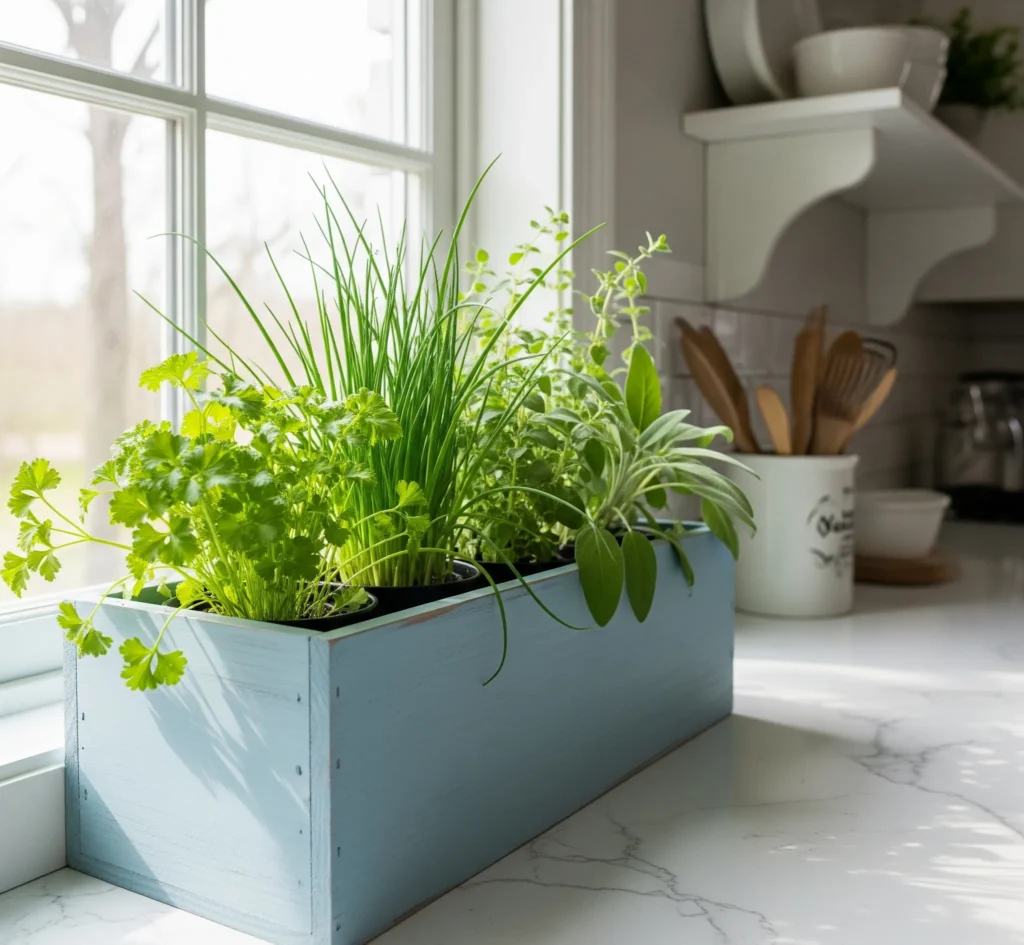
This is the holy grail for most herbs. A windowsill that gets at least 4-6 hours of direct sunlight a day is ideal. East-facing windows get lovely morning sun, while south-facing windows get the most intense light throughout the day. If you have one, claim it for your herbs! My south-facing kitchen window is basically a mini jungle.
Wall Shelves Near a Kitchen Window
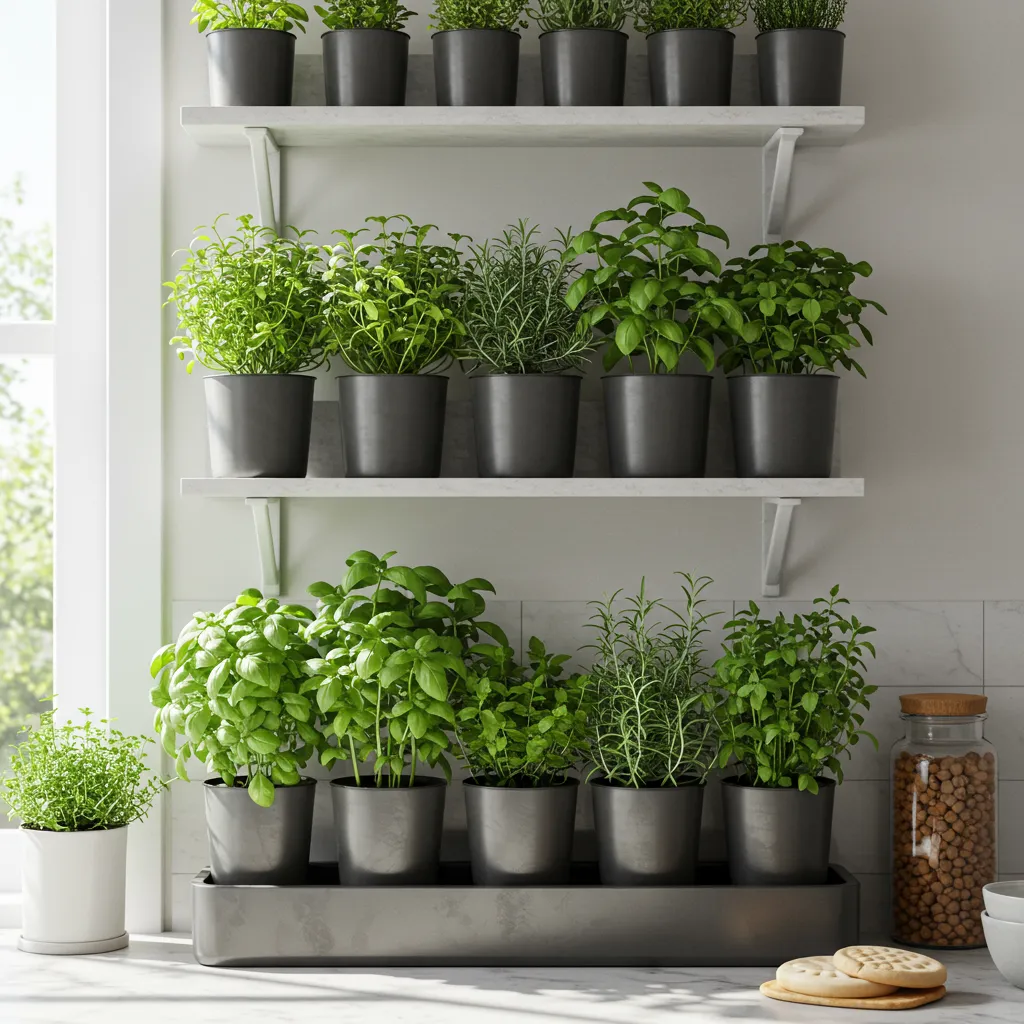
If your windowsill is too narrow or already cluttered (guilty!), wall shelves near a kitchen window are an excellent alternative. They elevate your plants, ensuring they still get plenty of light, and they look incredibly chic. Just make sure the shelves are securely mounted.
Hanging Planters Near Natural Light
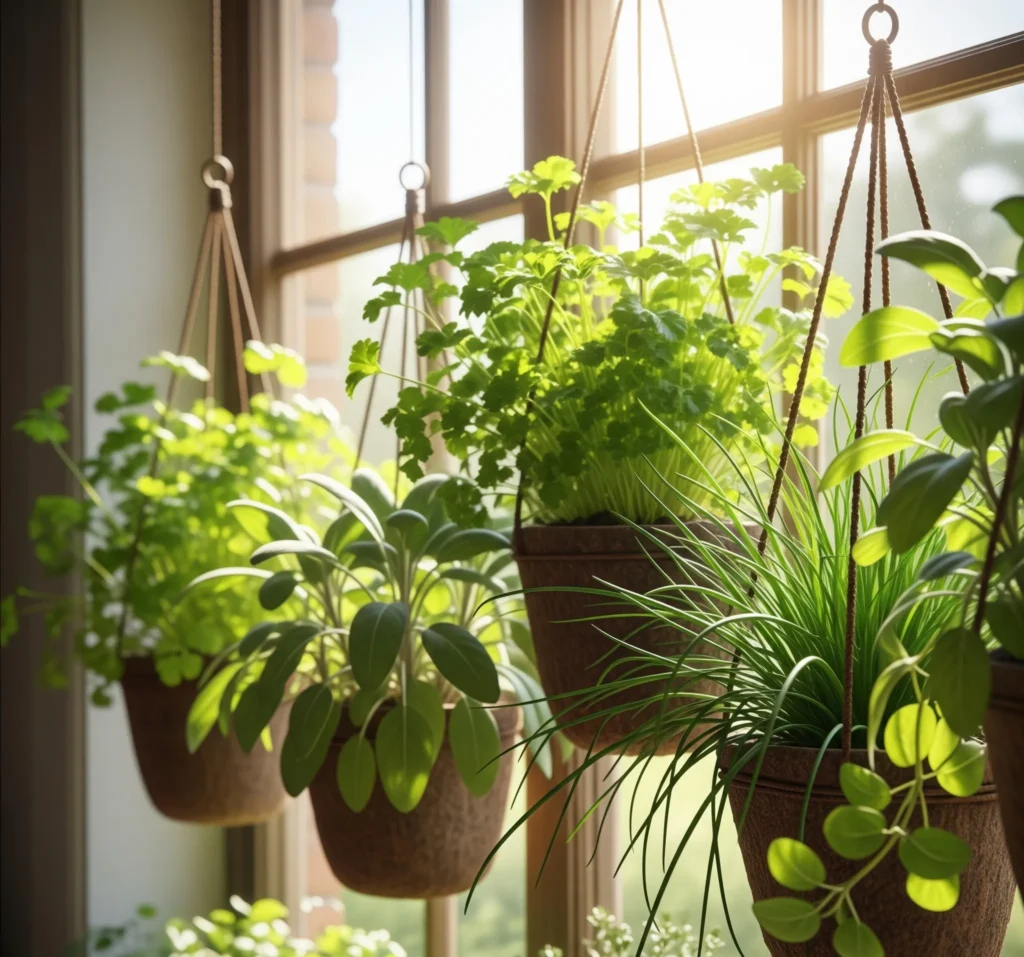
Remember those hanging planters we talked about? They’re not just space-savers; they’re also fantastic for catching light. Hang them directly in front of a sunny window or near one where they can bask in indirect bright light. This works wonders for herbs that don’t need intense, direct sun all day.
Countertop Near a Grow Light
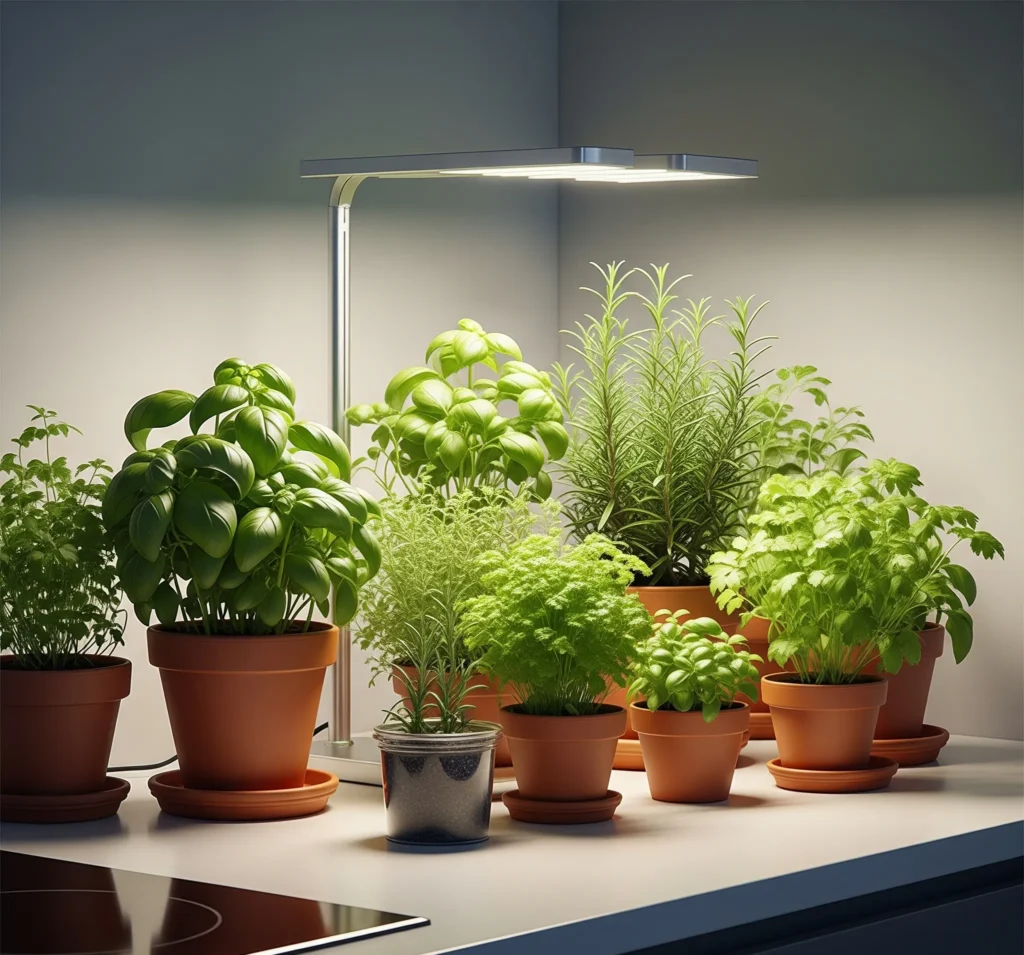
Alright, let’s be real. Not everyone has a perfectly sunny window. And that’s totally fine! A countertop near a grow light is a perfectly legitimate, and often superior, option. Modern grow lights are surprisingly compact and efficient, mimicking natural sunlight. This is especially good for those long, dark winter months.
Pro Tip: Rotate your plants every few days, especially if they’re only getting light from one direction. This helps them grow evenly and prevents them from leaning towards the light source, giving you a bushier, happier plant.
How to Care for Indoor Herbs (Even If You’re Forgetful)
So, you’ve got your herbs, they’re in cute pots, and they’re soaking up some rays. Now for the nitty-gritty: indoor herb garden care. Don’t worry, even if you’re a bit forgetful (like me, bless my heart), growing herbs indoors is totally doable.
How Often to Water Each Herb (and What Overwatering Looks Like)
This is probably the trickiest part. Most herbs prefer consistently moist, but not soggy, soil. A good rule of thumb is to stick your finger about an inch into the soil. If it feels dry, it’s time to water. Herbs like basil and mint might need water more frequently, while rosemary and thyme prefer to dry out a bit between waterings. Overwatering is the silent killer of indoor plants—it looks like yellowing leaves, wilting despite wet soil, and sometimes a funky smell. If you see that, back off the watering can, friend!
Soil Types and Drainage Tips
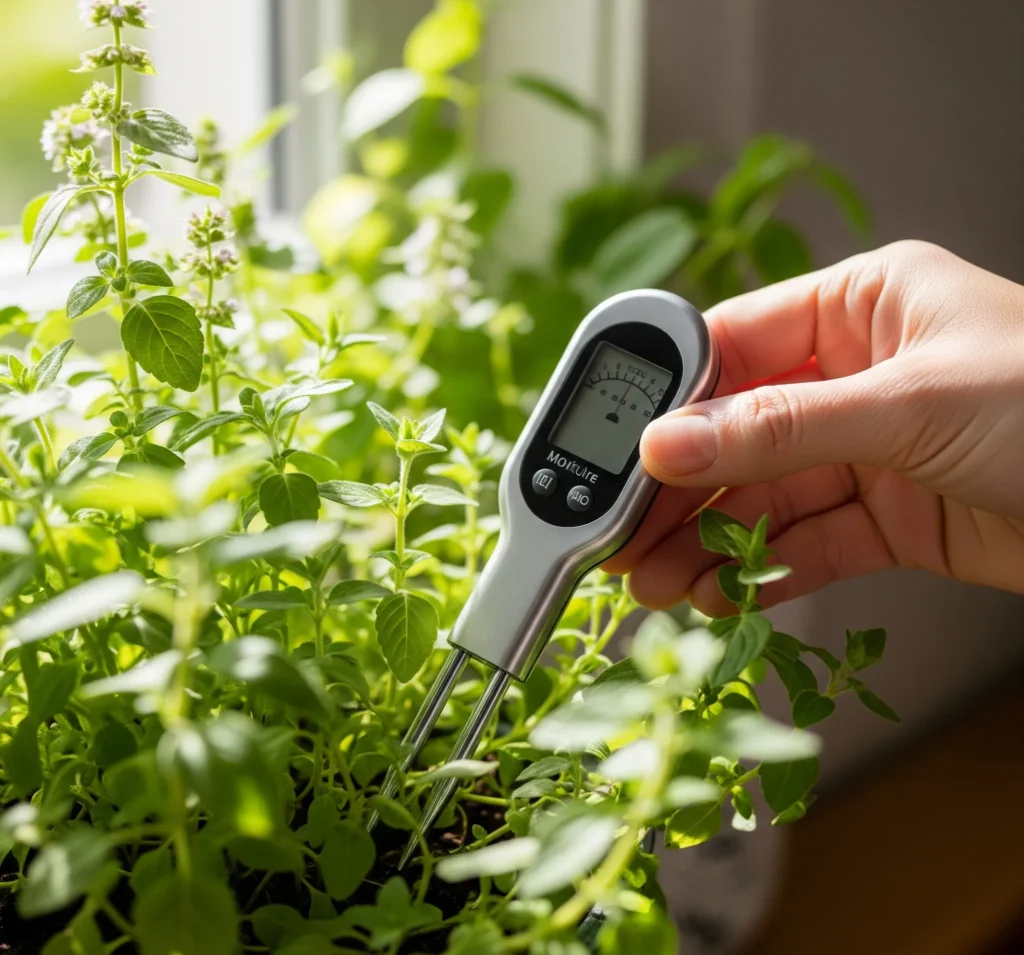
You can’t just scoop up dirt from outside, FYI. Indoor herbs need well-draining potting mix, often labeled for containers or herbs. This kind of soil prevents compaction and allows roots to breathe. Remember our drainage hole obsession? That’s where it comes in. A layer of small stones at the bottom of the pot before the soil can also help, but the hole is paramount.
Pruning and Harvesting for Fuller Growth
This might sound counterintuitive, but snipping your herbs actually encourages them to grow fuller and bushier. When you harvest, snip off the top few sets of leaves, just above a leaf node. This tells the plant to branch out instead of just growing taller. For basil, pinch off any flower buds you see—flowering makes the leaves bitter.
When to Repot or Rotate Herbs
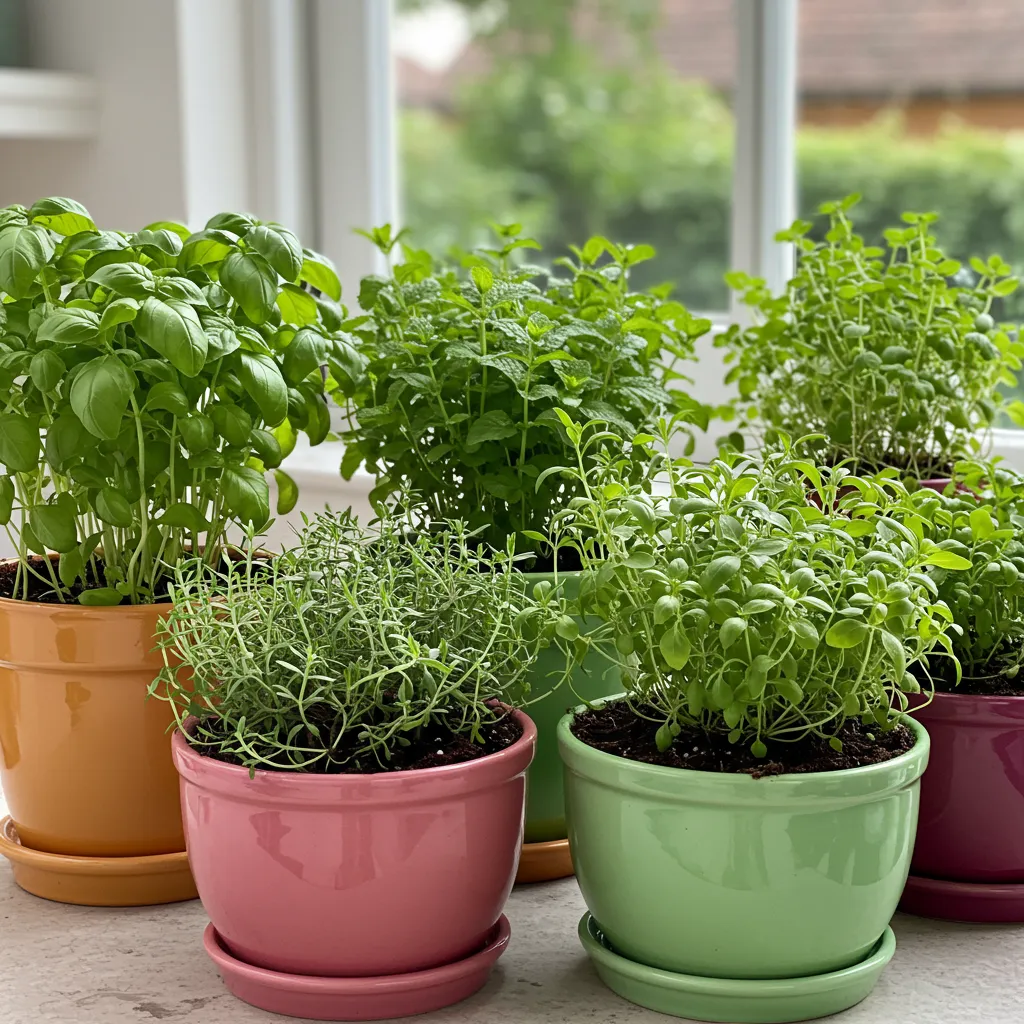
As your herbs grow, they might become root-bound, meaning their roots have filled the pot. If you see roots peeking out of the drainage holes or the plant looks generally unhappy and stunted, it’s time to repot into a slightly larger container. Rotating your herbs (physically turning the pot) ensures even light exposure, preventing them from becoming leggy and lopsided.
Using Organic Fertilizer for Indoor Plants
Indoor herbs, especially those you harvest frequently, will eventually deplete the nutrients in their potting mix. A little organic fertilizer every few weeks during their growing season (spring and summer) can give them a much-needed boost. Just follow the package directions; too much fertilizer is worse than none at all.
Pro Tip: Invest in a simple moisture meter. They’re inexpensive and take the guesswork out of watering, telling you exactly when your herbs are thirsty. It’s a game-changer for the forgetful gardener.
Creative Kitchen Herb Garden Ideas That Double as Decor
Who says a functional herb garden can’t be a stunning piece of decor? These kitchen herb garden ideas are all about making your small kitchen plant decor work double duty, adding both greenery and style.
Use Magnetic Spice Tins for Herbs on Your Fridge
This is brilliant for tiny kitchens! Grab some magnetic spice tins, drill tiny drainage holes in the bottom (yes, again!), and plant small herbs like chives or thyme. Stick them right on your fridge. It’s an instant vertical garden and looks surprisingly chic. Plus, it’s super convenient for cooking!
Create a Hanging Herb Wall with Labeled Jars
Remember those wall-mounted planters? Take it up a notch. Find a rustic piece of wood, attach some hose clamps or metal rings, and slide in labeled mason jars with your herbs. It’s a beautiful, living art piece that smells amazing. Add chalkboard labels or rustic tags for that perfect Pinterest aesthetic.
DIY Window Herb Boxes That Look Beautiful Year-Round
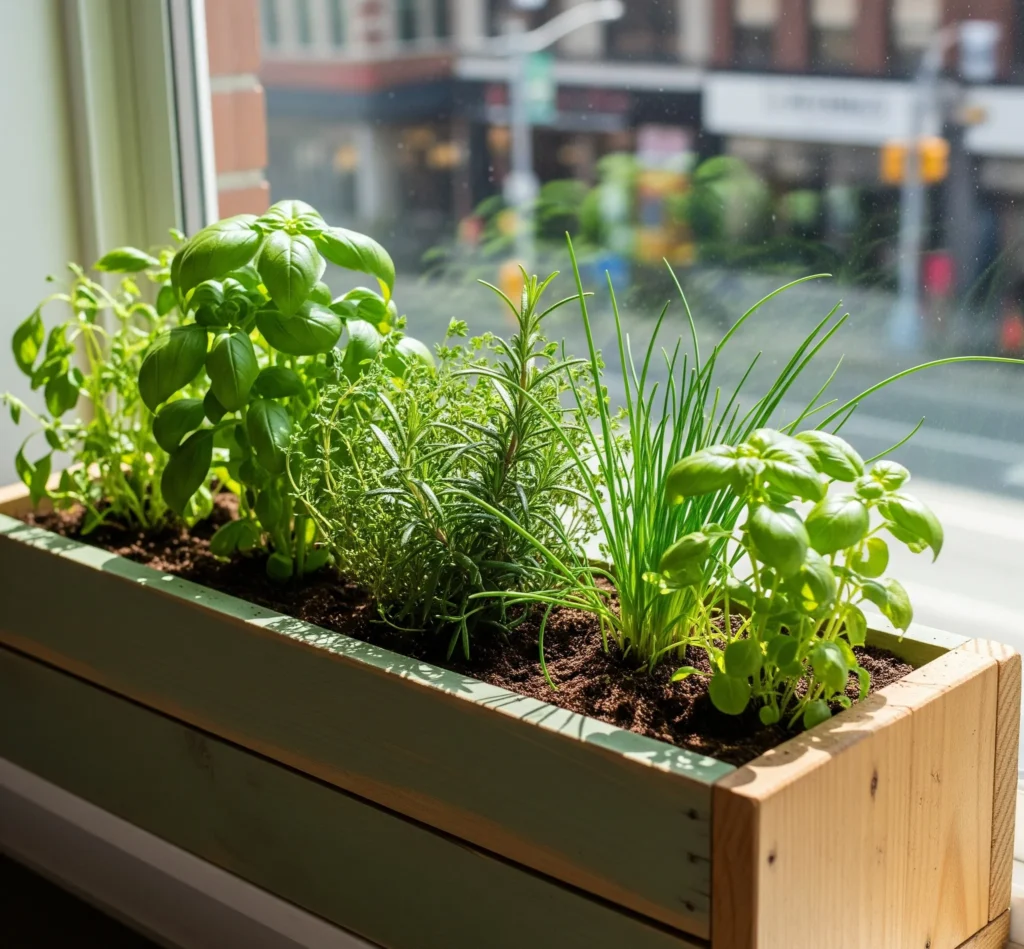
If you have a wide windowsill, consider building or buying a shallow window box. You can plant several herbs together in one long container, creating a cohesive look. Paint it to match your kitchen decor, and you’ve got a DIY herb garden indoor setup that looks beautiful year-round. It’s a classic for a reason.
Add Chalkboard Labels or Rustic Tags for That Pinterest Aesthetic
Presentation matters, right? Instead of just sticking a plastic tag in your pot, get creative with chalkboard labels, small wooden stakes, or even rustic metal tags. Not only do they help you identify your herbs (because, let’s be honest, sometimes basil and mint look similar to the untrained eye), but they also add a charming, personalized touch.
Pro Tip: Mix and match different pot materials and sizes within your display for visual interest. A terracotta pot next to a ceramic one, or a small hanging planter beside a larger countertop one, creates a dynamic and appealing arrangement.
Closing Off
So, there you have it! Who knew that even a tiny kitchen could grow fresh herbs all year long? From picking the perfect little plants to finding creative ways to display them, it’s totally possible to have that dream kitchen herb garden without a yard. It just takes a little planning, some smart container choices, and a dash of consistent care (even if you need a moisture meter, IMO).
Now that you’re armed with all this knowledge, I’m genuinely excited to see what you create. Why not share your herb garden setup on Pinterest or tag us in your photos? Let’s grow together and inspire each other to bring more green goodness into our homes! Happy planting!
